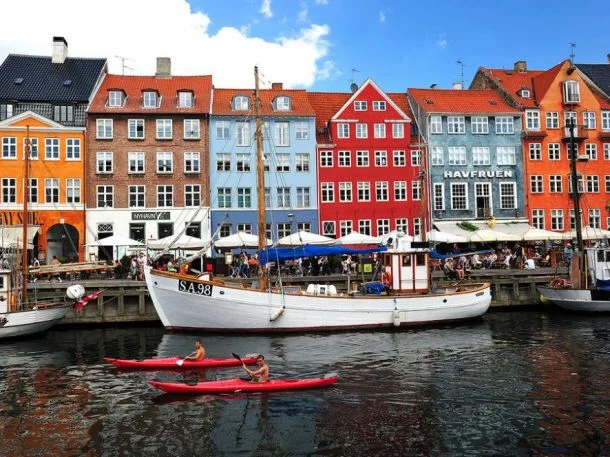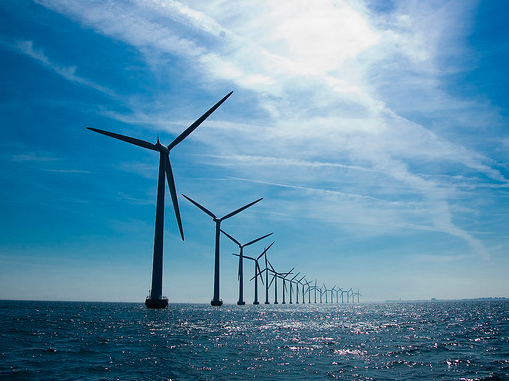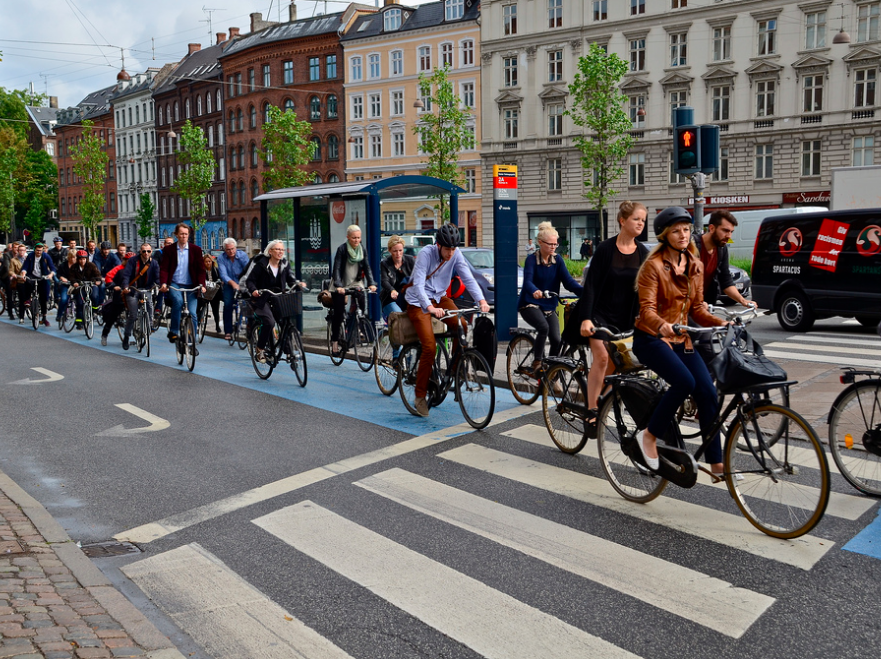
Whether it’s the environment or technology, we live in a fast-changing world that requires innovative cities to keep considering the impact all of these changes have on their citizens. Copenhagen, recently named the 2014 European Green Capital – surpassing 17 other candidates – is racing to the spotlight of what it means to be a smart city in today’s world. They are the city to watch, so what can NYC learn?
What Have They Been Doing?
Every city’s dream is to create a healthy environment for the citizens while at the same time benefiting financially. Impossible? Copenhagen doesn’t seem to think so. In the past decade, the city has launched projects across a wide spectrum to recreate itself as a green city and in the past 5 years alone the country has seen 55% growth in the sustainability sector. When the harbor water became overly polluted, the city modernized the sewage system and cleaned up the port. Now it’s clean and safe enough to swim in, has improved local business life surrounding the harbor, and has given the city some of the best drinking water in the world. The city has reduced oil and gas consumption by using wind power created by hundreds of turbines placed in Esbjerg, Denmark’s largest fishing port. Integrating biodiversity in construction, began in 2008 and is now a mandatory factor in building. It has become an important part of the city’s strategy to work against the challenges of climate change.Innovation is blooming across the board and Klaus Bondam, previous mayor of technical and environment administration, inspired by NYC’s very own pocket parks, led successful campaigns to integrate them into the city. All of this is in addition to being one of the most bikeable cities in the world. Copenhagen has continued to implement an even more extensive biking infrastructure by developing in more neighborhoods, and adding ramps, bridges, and available parking space.
When the harbor water became overly polluted, the city modernized the sewage system and cleaned up the port. Now it’s clean and safe enough to swim in, has improved local business life surrounding the harbor, and has given the city some of the best drinking water in the world. The city has reduced oil and gas consumption by using wind power created by hundreds of turbines placed in Esbjerg, Denmark’s largest fishing port. Integrating biodiversity in construction, began in 2008 and is now a mandatory factor in building. It has become an important part of the city’s strategy to work against the challenges of climate change.Innovation is blooming across the board and Klaus Bondam, previous mayor of technical and environment administration, inspired by NYC’s very own pocket parks, led successful campaigns to integrate them into the city. All of this is in addition to being one of the most bikeable cities in the world. Copenhagen has continued to implement an even more extensive biking infrastructure by developing in more neighborhoods, and adding ramps, bridges, and available parking space.
Why Are They Doing It?
In a revolutionary pursuit, Copenhagen has pledged to cut the city’s emissions and become carbon neutral by 2025 while at the same time increasing employment and spurring growth. To implement the 2015-2025 plan of action, the city will launch 15 projects under the four following themes:
- Green Energy Consumption
- Green Energy Production
- Green Mobility
- Adaptation
At the center of Denmark’s clean tech ecosystem is the Copenhagen Cleantech Cluster. Working to attract international businesses to test new clean tech, the cluster hopes to conquer all areas of making a smart city: economy, mobility, environment, people, living, and governance. The organization hopes to foster relationships and collaboration between international and Danish cities. It helps companies find the right partners to test projects in Copenhagen’s “living lab” for clean tech. In return, these companies become a part of the Copenhagen green brand and get to see projects come to life. The organization hopes to increase knowledge of Copenhagen and business opportunities.
Smarter Solutions
 Hardly a mountainous nation, the flat landscape has always made biking a convenient mode of transport, but the city’s idea of integrating cycling as part of urban planning and design has made biking a way of life. To make things even easier, companies are embracing the idea of improving biking. The Copenhagen Wheel, for example, is a hybrid e-bike that collects energy used while biking so you can use it as fuel when you need a boost. Several other features include using your phone to: lock and unlock your bike, monitor traffic congestion and pollution levels, and even share your data with friends to meet up. The city followed suite is updating their bike sharing system to include electric bicycles.Just this month, the city joined other trend-setting cities in Cisco’s Internet of Everything digital revolution to incorporate technology into every aspect of city life (not just biking!). In the municipality, smart lighting, waste management, parking, and smart grids have already merged into a network powered by sensors throughout the city.
Hardly a mountainous nation, the flat landscape has always made biking a convenient mode of transport, but the city’s idea of integrating cycling as part of urban planning and design has made biking a way of life. To make things even easier, companies are embracing the idea of improving biking. The Copenhagen Wheel, for example, is a hybrid e-bike that collects energy used while biking so you can use it as fuel when you need a boost. Several other features include using your phone to: lock and unlock your bike, monitor traffic congestion and pollution levels, and even share your data with friends to meet up. The city followed suite is updating their bike sharing system to include electric bicycles.Just this month, the city joined other trend-setting cities in Cisco’s Internet of Everything digital revolution to incorporate technology into every aspect of city life (not just biking!). In the municipality, smart lighting, waste management, parking, and smart grids have already merged into a network powered by sensors throughout the city.
How Can NYC Learn?
Copenhagen has an exciting year planned for 2014, and invites the world to come and see what is happening through Sharing Copenhagen, emphasizing the importance of learning from others. Even as he accepted the honor for European Green Capital, Morten Kabell, mayor of Copenhagen acknowledged the need to continuously learn from other smart cities’ projects, such as waste management in Vienna and noise reduction in Bristol.Already taking steps, NYC has joined C40, a climate leadership group of megacities dedicated to addressing climate change. The city pledged to cut emissions by 30% by 2017. NYC is also communicating with Copenhagen through various outlets, such as Copenhagen Cleantech Cluster, to make transatlantic improvements. New York may never truly compare to a city of 1.2million people in Northern Europe, but in taking Kabell’s advice, the city can look to Copenhagen’s cornucopia of ideas and projects (Green Roofs, clean harbor, electric bikes, sustainable public transit, etc.) and make clean tech a New York way of life.For more information on sustainable projects in Copenhagen, please visit the city’s official website.

